- Excellent scan quality for the price
- Stable software
- Easy to use
- Turntable powered by scanner
- High bang for the buck
- Cable too short for scanning large objects
- Mediocre accessory quality
The 3DMakerPro Lynx is a new 3D scanner for scanning larger objects. Coming in at a price of around $400, it is another low-cost device from 3DMakerPro that is aimed towards beginners and non-professionals that want to 3D scan without spending an arm and a leg.
Just like we did with the 3DMakerPro Mole, we’ll take the Lynx through its paces to see how it performs. Compared to higher-end devices, this 3D scanner appears to be a massive bargain. Are the compromises okay for the lower price or is it not worth spending your money on? Let’s find out!
3DMakerPro Lynx Specifications
| 3DMakerPro Lynx Specs | |
|---|---|
| Price | 3DMakerPro |
| Accuracy | 0.10 mm |
| Resolution | 0.30 mm |
| Frame rate | 10fps |
| Tracking mode | Visual tracking |
| Work distance | 400-900 mm |
| Single capture range | 250×400 mm |
| Typical object sizes | 100-2000 mm |
| Light source | NIR |
| Color texture | Extended support |
| Dimensions | 290x120x55 mm |
Getting Started
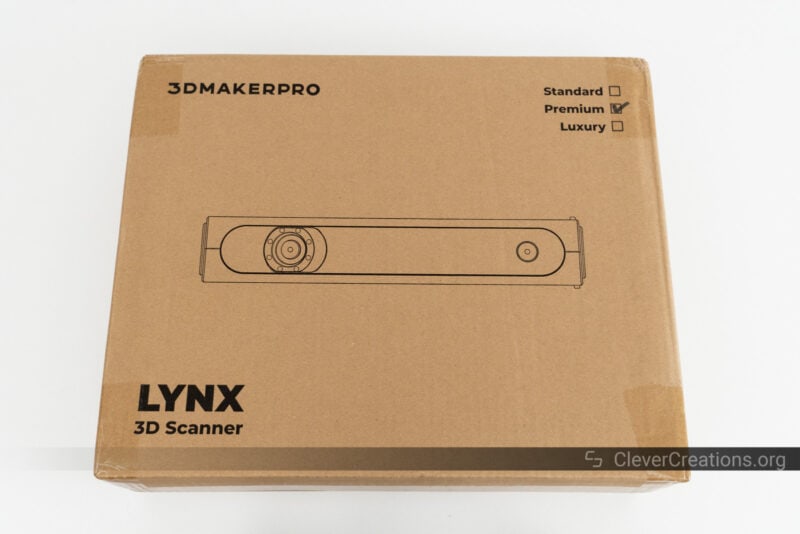
When it comes to unboxing the 3DMakerPro Lynx, there’s not much to it. The 3D scanner comes in a simple box that contains a carrying case.
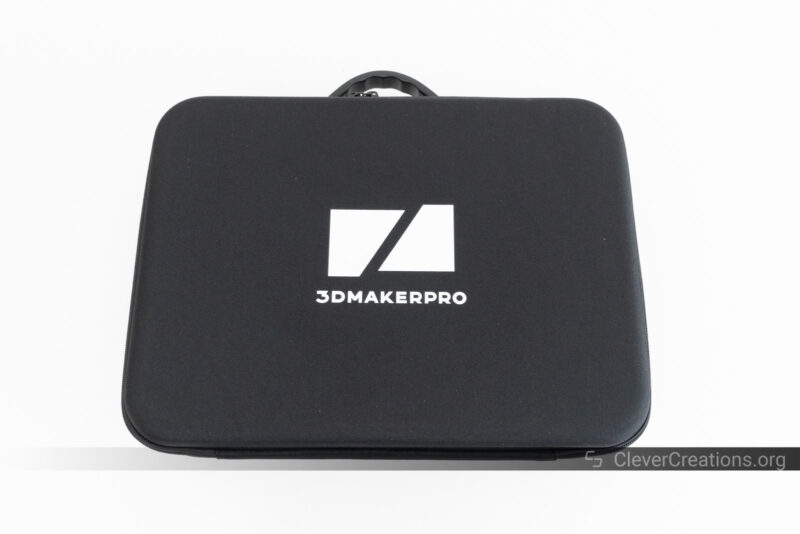
Opening the carrying case gets you to the good stuff, with the scanner itself, its accessories, and cables all placed in their corresponding slots.
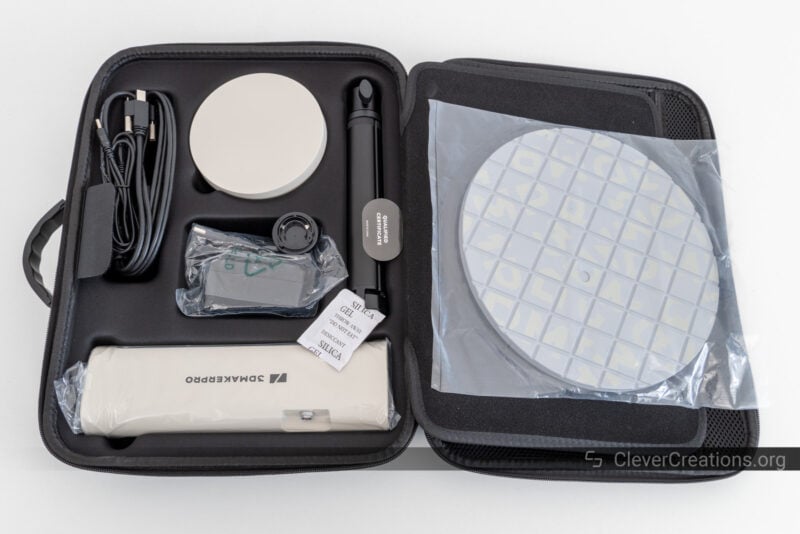
We were sent the Premium version of the Lynx. It’s the middle version out of the three available and comes with a few extra things you don’t get in the Standard package. The Luxury version also comes with the Color Kit for capturing color textures, but the Premium or Standard editions are enough if you don’t need that.
This is how the versions compare:
| Standard Edition | Luxury Edition | Premium Edition |
|---|---|---|
| Lynx 3D scanner | Lynx 3D scanner | Lynx 3D scanner |
| Power cord | Power cord | Power cord |
| Data cable | Data cable | Data cable |
| Carrying case | Carrying case | Carrying case |
| Tripod | Tripod | |
| Turntable kit | Turntable kit | |
| Color kit | ||
| Price | Price | Price |
There’s no 3D scanning spray included with any of the Lynx versions. If you don’t already have any, we recommend picking some up. You won’t be able to 3D scan black or reflective surfaces well without it.
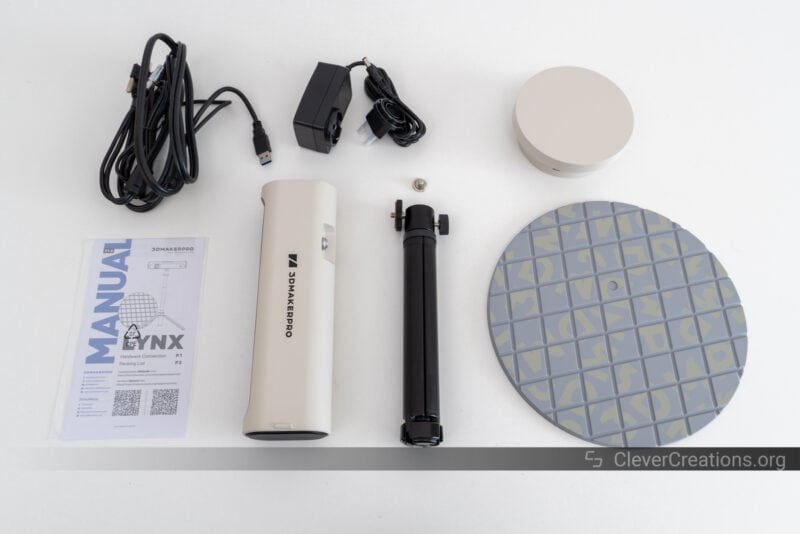
3DMakerPro Lynx Features
For its price, the Lynx has a lot to offer in terms of features. We’re not sure how 3DMakerPro managed to pack so much into this device, but we have no complaints about it.
Large Object Scanning

The 3DMakerPro Lynx is designed for 3D scanning large objects. The ideal size objects are 10-200 cm across, but we found that you can go bigger without many repercussions. As long as your computer has enough RAM to deal with the extra data and you don’t mind the extra processing time, you’ll be fine.
Its officially listed maximum capture volume is 500x500x500 cm. We haven’t quite reached that in our testing, but scanning two people at once was not an issue.
The single capture range of the Lynx is 250×400 mm, which means that you can capture a good chunk of an object at once.
That was one of the limitations we ran into when reviewing the Mole. With its 200×100 mm capture range, it took forever to scan larger objects. You won’t run into any such issues with the Lynx.
Of course, the capture detail of the Lynx isn’t as high as the Mole, or as that of higher-end scanners in the $2500-$10000 range. But as you will see from our test results, the captures still look very good and have a more than acceptable quality for a 3D scanner with this price.
The officially listed detail is listed as 0.10mm accuracy and 0.30mm resolution. As always, we prefer to take these numbers with a big grain of salt. Not only are they based on ideal conditions, but they are also hard to verify and difficult to interpret for most end users.
You can use our test scans further down this review to get a good idea of the level of detail the 3DMakerPro Lynx is capable of.
Scanning Without Tracking Markers

Just like the aforementioned Mole and the high-end 3DMakerPro Whale, the Lynx uses markerless scanning technology to help capture objects
It sounds fancy, but it’s just an algorithm that helps prevent misalignment during 3D scanning without the use of reflective tracking markers.
In practice, we find it to work decently well. It’s the second scanner of 3DMakerPro that we reviewed with this feature, and we’re starting to become convinced that there is something there.
That said, don’t expect to be able to capture anything without markers. You won’t be able to capture objects without sufficient recognizable features or textures, like a typical IKEA table. We’ve tried it and it’s just not happening.
Mobile Scanning*
When 3D scanning with the Lynx, you have the option to capture objects without being tethered to a computer. It requires the use of an additional accessory, the Connect.
It’s a straightforward battery pack with mounting points for the 3D scanner and your phone, along with cables for data passthrough from the scanner to the phone.
We think it’s most practical for people who 3D scan a lot in the field or that work with particularly large objects, like cars.
In our testing, we found the included cables of the Lynx to be a bit too short for large objects, say a person or bigger. At that point, it becomes tricky to walk around the object while scanning and not run into the length limit of the cable. We resorted to using a basic USB 3 type A extension cable, but the Connect would have been more practical.
We don’t have any hands-on experience with this accessory, so we can’t say much more about it. At $89, however, it seems fairly priced for what it does.
Color Texture Scanning*
The 3DMakerPro Lynx 3D scanner doesn’t capture color textures out of the box. It would be too much to ask at this price point.
You do have the option to capture color textures with the Color Kit accessory, which is sold separately for $130. You’ll also need to provide your own cell phone or DSLR camera to capture the images that will be used for the textures.
We don’t think it is something that everyone needs. For example, if you just want a 3D scanner to create STLs for basic 3D printing, you don’t need the Color Kit. Unless you have access to a full-color 3D printer, of course.
If you buy it, you can use it with all of 3DMakerPro’s scanners. That’s something we like, as it gives you the option to upgrade all of your existing 3DMakerPro 3D scanners at once, and potentially future ones too.
We haven’t had any hands-on experience with the Color Kit, so we can’t provide any feedback on it. We will update this review once we have given it a go.
Scanning with the 3DMakerPro Lynx
The workflow for 3D scanning with the 3DMakerPro Lynx is identical to that of the Mole. You’ll be working with larger objects, but other than that, there is not much of a difference.
To avoid repeating ourselves, we recommend you check out the corresponding section in our Mole review. It shows you the exact steps from starting a scan to ending up with a clean mesh.
Software

3D scanning with the 3DMakerPro Lynx is done with the included JMStudio software. You can use it to capture point cloud data using the 3D scanner, clean and align that data, and then convert it to a mesh and export it to a variety of 3D file formats (OBJ/STL/ASC/PLY).
Again, there’s not much we can cover here that we didn’t already mention in the Mole review, so we’ll keep this section brief.
What stood out to us this time around is that the software stability noticeably improved. The number one issue that we had when testing the Mole was that the software had occasional crashes. This time around, we encountered no software issues whatsoever.
For reference, we tested on the same system as last time. Instead of JMStudio version 2.5.8.0044, we used the latest version—v2.5.11.0063. A world of difference in terms of stability.
We haven’t gone back yet and re-tested the Mole with the new software, but it’s safe to assume that the stability improvements apply to both scanners.
It’s great progress, and we’re stoked that the 3DMakerPro team is actively working on making their software better.
On that subject, the tracking during 3D scanning seems improved as well. Compared to when we tested the Mole, it was a bit easier to maintain tracking with the Lynx when moving the 3D scanner quickly.
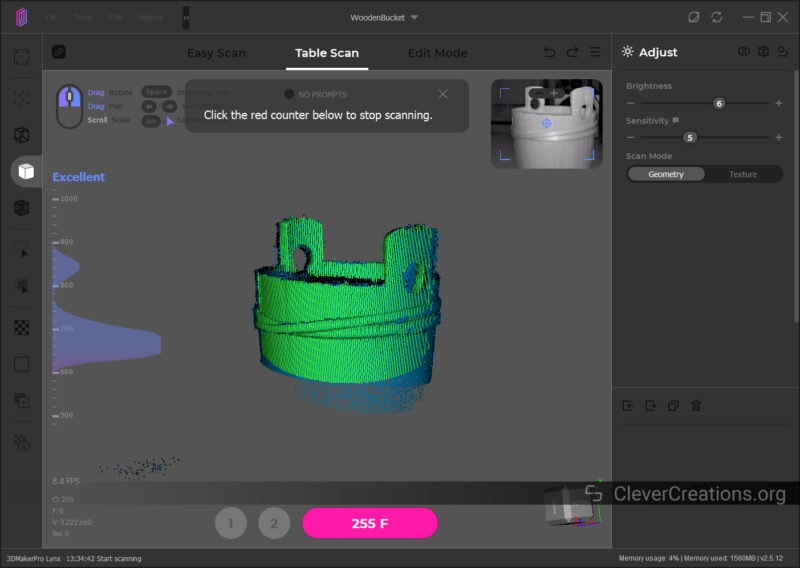
This could also have been caused by the larger single-capture range of the Lynx, but either way, it was a pleasant experience.
Because both 3D scanners use the same software, it’s possible to combine scans of both scanners into one single scan to get the best of both worlds. For example, you can scan a car body with the large capture range of the Lynx and then switch to the Mole for the more intricate engine details.
Hardware Requirements
| Minimum computer requirements | Intel Core i5 8th, 16GB RAM, MX250 GPU with 2GB VRAM |
|---|---|
| Recommended computer requirements | Intel Core i7 8th, 16GB RAM, NVIDIA 1060 GPU with 4GB VRAM |
The listed hardware requirements for the 3DMakerPro Lynx are reasonable, but our experience is that you’ll want a more powerful system than the recommended specs.
We tested on a system with an AMD Ryzen 9 3900X and 32GB of RAM, along with an NVIDIA RTX 3080 GPU. Even on that machine, we had to deal with considerable processing time on our larger scans.
The 16GB of RAM also feels understated. Just JMStudio itself reached 21GB at some points in our testing, and that was without texture mapping. 32GB feels like a more realistic recommendation.
If you are okay with longer processing times, however, the minimum or recommended specs can still be sufficient. Just know that if you want to make money with your 3D scanner (i.e. save time), you’ll want a system with more power.
Ease of Use
We found the user experience of the 3DMakerPro Lynx to be good in some areas, and lacking a bit in others. No major issues, but still some things worth getting into.
On the plus side, the Lynx only weighs about 500 grams (1 lb) and lies comfortably in the hand. Even during longer 3D scanning sessions, we could hold onto it for long periods without having to switch grip or hands.
On the negative side, as we stated above, the included cable is too short for walking around something the size of a person or larger. It’s solvable with an extension cord or the Connect kit. If you don’t have either, it can be an annoyance.
Similarly, the thumbscrews on the USB port are annoying to work with. They’re uncomfortable for the fingers to tighten or untighten, and there’s no tool included that would make it easier.
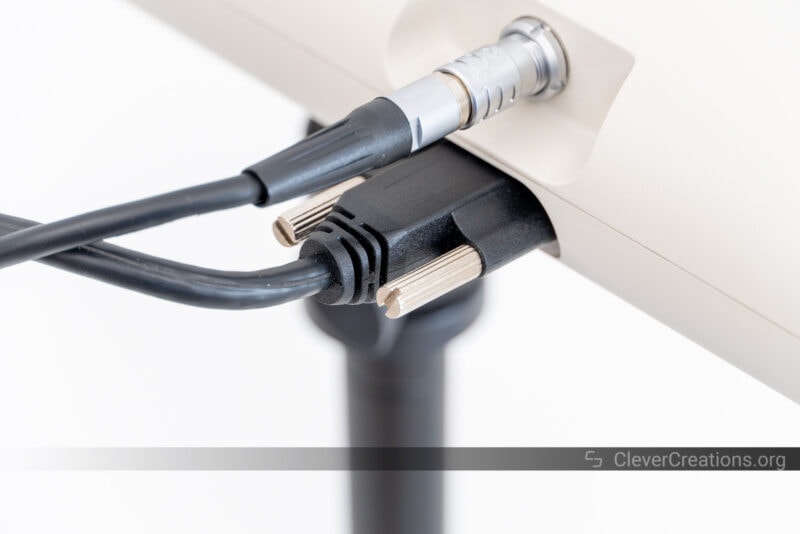
It’s not an issue if you leave the Lynx lying around in your workspace, but if you need to carry the 3D scanner around, it can be a hassle to deal with the thumbscrews each time you take it on and out of the case
Something else that we think can be improved is the lack of a start/stop scan button on the 3D scanner body. Now, you have to use your computer to start and stop scans, but it would be nice if the 3D scanner itself had a button for that. It’s not essential but would make life easier in many cases.
In short, the user experience of the 3DMakerPro Lynx has room for improvement. But can we make a big deal of it at this price point? We don’t think so.
Build Quality & Design

When handling the Lynx 3D scanner, you’ll notice that it feels denser than it looks. Even though the exterior is nearly all plastic, it feels remarkably solid.
We never open devices during our 3D scanner reviews to avoid messing up the alignment of any optical components. But judging by the feel of the Lynx, it’s solidly built on the inside.
Externally, one of the few things we can point out is the cable ports. One is for a self-latching 2-pin connector, and the other is for a USB type-B connector with thumbscrews.
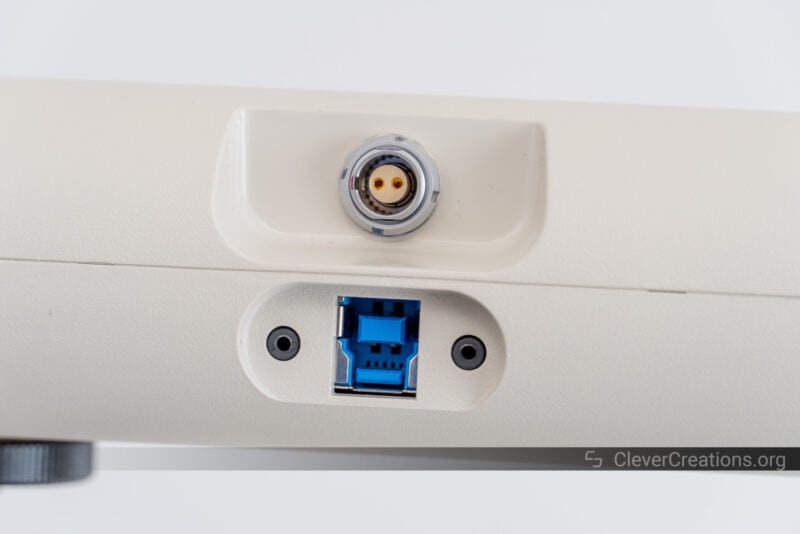
Both are excellent in terms of durability, provided you secure the thumbscrews on the USB connector.
We are a bit puzzled by the switch to two separate cables. The Mole used a single self-latching cable for power and data. The extra hassle and potential for failure of the second cable feel like a step back.
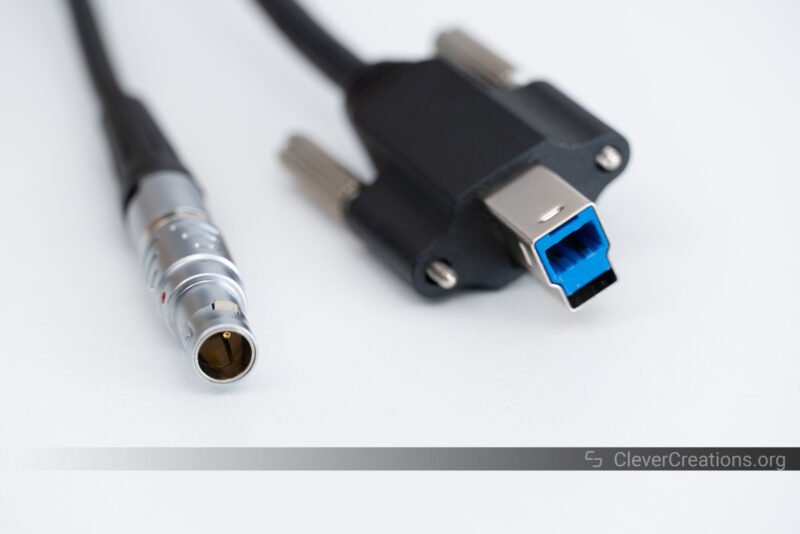
That said, it’s unlikely that either of the cables or connectors wear out during the lifespan of the 3D scanner when treated with care.
Accessories
Like any 3D scanner, the 3DMakerPro Lynx comes with several accessories. We’ll go over them briefly so you’ll have an idea of what you can expect.
Turntable

The turntable that comes with the Lynx is the same as the one accompanying the Mole, albeit with a larger top surface. It’s of low quality, with a lightweight plastic build, no specifications label, no power button, and no rubber interface between the body and the larger surface.

Because it is supposed to be used for larger objects, we tested the maximum weight limit of the turntable. We found that it could take up to around 15 kg without slowing down.
With more than 15 kg on top, it sounded like the turntable started to struggle. So don’t expect it to hold up long if you want to use it for 3D scanning stone busts and things like that.
One new thing is that the turntable can be powered directly from the scanner. No longer do you have to hook it up to your computer’s USB port or a wall outlet. This creates fewer wires across your workspace.
It’s not a new feature of the turntable itself, but it’s just an additional cable that you connected from the scanner to the turntable. Still, it’s nice to have, and we like it.
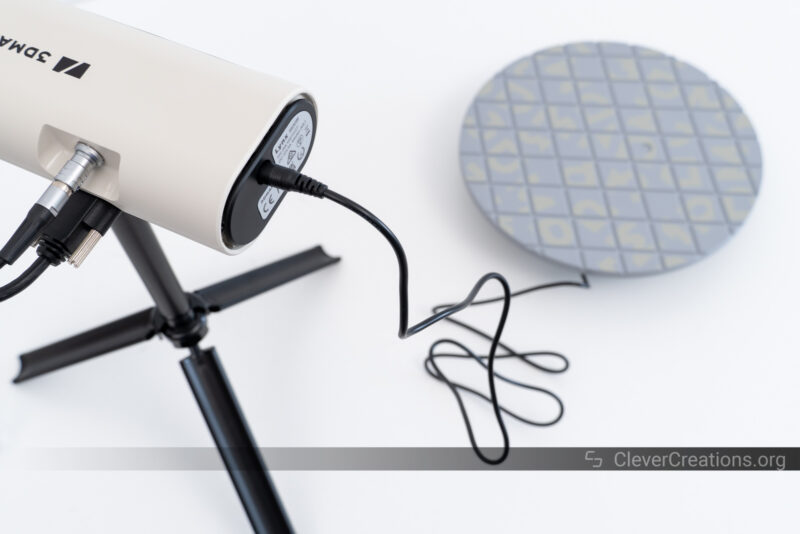
Tripod
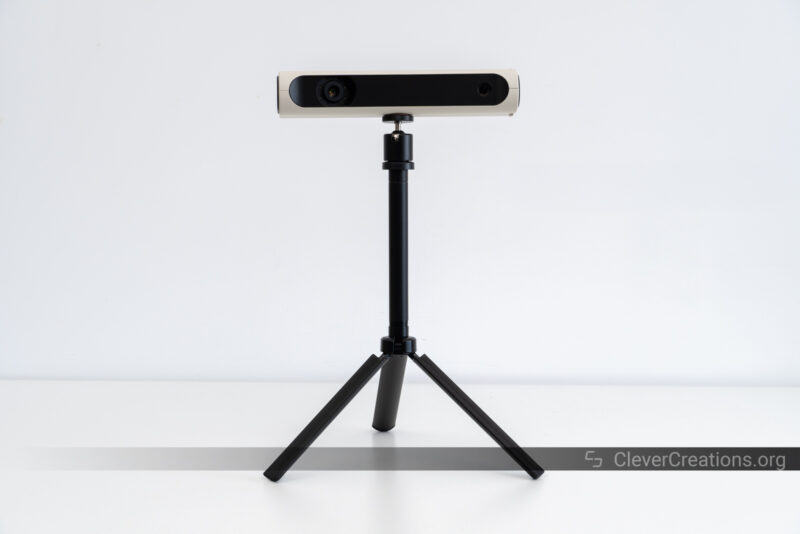
We have mixed feelings about the tripod of the 3DMakerPro. We like some things about it, whereas others feel like a step back.
To start, the tripod itself is tall enough for 3D scanning most objects you’ll use on the turntable. When you want to capture larger objects, you can extend the height of the tripod further.
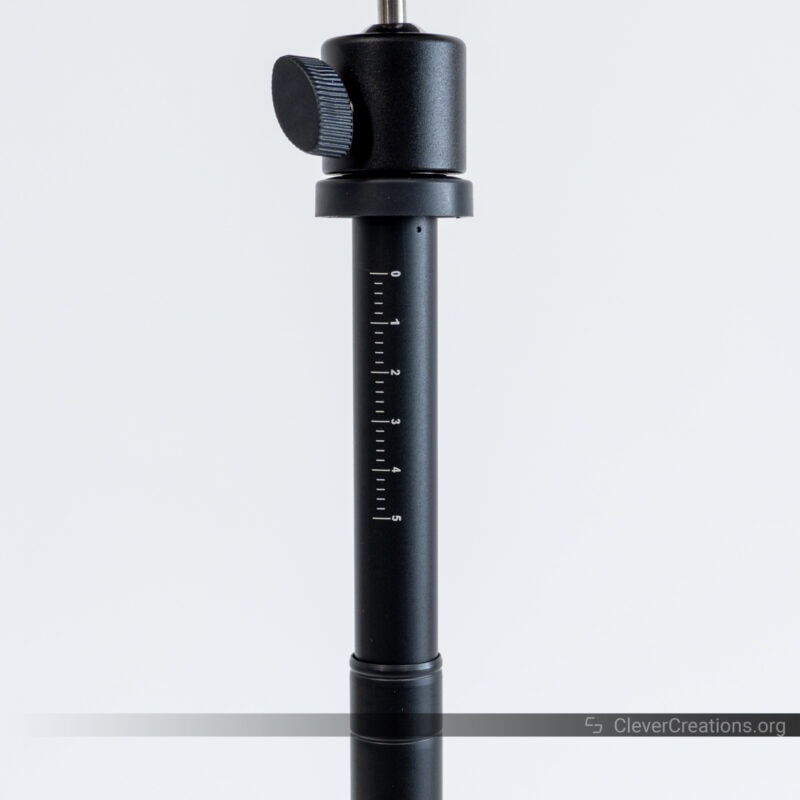
The extension works with a twist-to-lock mechanism. You twist to unlock, extend the shaft, and twist in the other direction to lock. It’s quick and easy.
Another thing we like is the locking ball head at the top of the tripod. It makes it convenient to reposition the scanner. The tripod of the Mole scanner used a Z-shaped mechanism to lift the scanner, but we found that it interfered with the connector of the 3D scanner cable. No such issues here.

The legs of the tripod are less impressive. Their rubber coating leaves marks everywhere, and they are a hassle to wipe away after use.

In addition, the legs aren’t tightened in any way and just float against a locking ring.
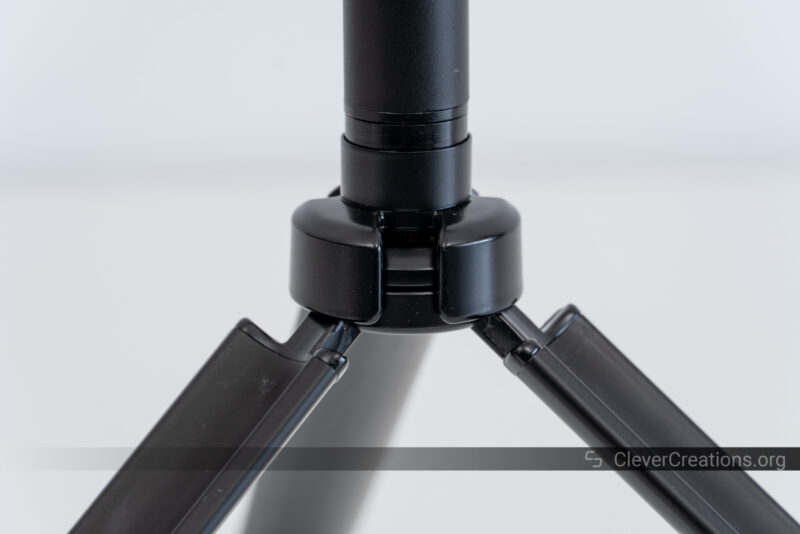
It still works all right because the weight of the scanner and tripod mostly hold things in place. But once you lift the tripod, the legs flop all over the place. It does not give a secure impression.
Carrying Case
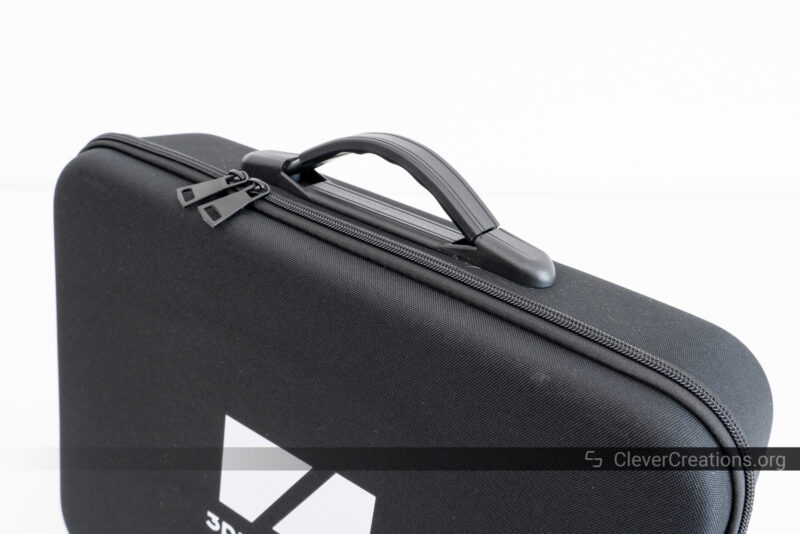
The carrying case of the Lynx is all right. It’s a simple black canvas bag with a zipper, handle, and foam inserts to store the 3D scanner and its accessories.
It’s not as nice as the hard case that comes with the Mole, but it’s fine if you just want to transport the Lynx and its accessories from place to place.
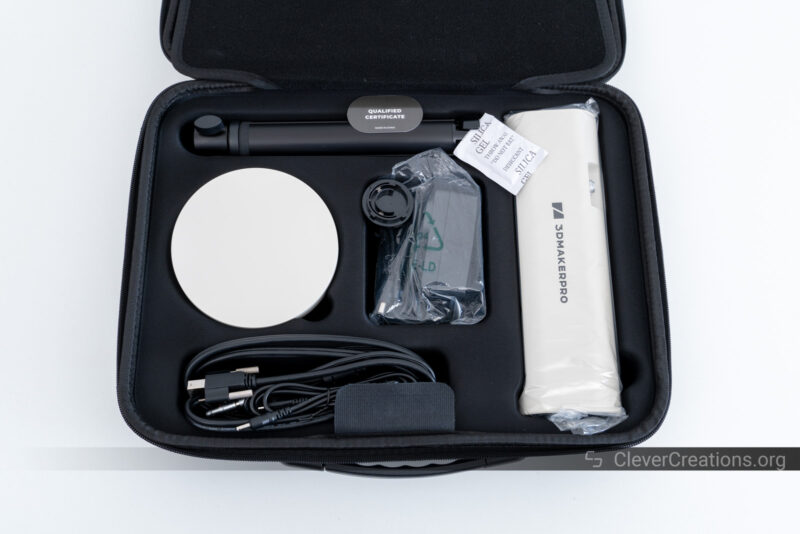
What we like is that its top lid has enough space to fit additional accessories. A couple of small bottles of scanning spray or some extra cables fit perfectly.
3DMakerPro Lynx 3D Test Scans
Because the Lynx is designed to scan larger objects, we tested it with different objects than the ones we usually scan in our 3D scanner reviews. As a result, it will be a bit harder to make a direct A/B comparison with the other scanners.
The models below are simplified to meet the 100MB limit of Sketchfab, so the actual level of detail you can get is higher than what you can see here. Still, it’s a good representation of the scanner’s capabilities.
Aside from being simplified, none of the models have been edited in any way. No smoothing or manual cleaning.
Caesar Bust
This 3D-printed pencil holder comes in at about 20x20x10 cm in volume and is the smallest thing we could reliably capture with the Lynx on the turntable.
The details are acceptable. There are some artifacts around the pencil holes, but those can be easily cleaned in post-processing.
Croc
A bit bigger, this croc is one of our go-to objects when testing 3D scanners.
The captured details are excellent, even though it’s clear that the Lynx is unable to capture the black internal sole at all. The holes in the front are also captured as dimples instead.
Backpack
Larger once more, we were very impressed with how the 3DMakerPro Lynx dealt with this mostly dark gray backpack. Creases, zippers, padding, it’s all there.
One exception is the black segments of the straps that we weren’t able to capture. That’s why the straps abruptly end mid-air.
Because of the flexible nature of the backpack, we also weren’t able to re-orient it to capture from additional angles. It would change the entire shape of the model. Still, we’re very happy with the results here.
Stack of Clothes
To test the Lynx with a variety of textures and colors, we used a stack of clothes and towels. To our surprise, they were all captured accurately.
This was one of the models we had to significantly simplify before uploading. The original .obj is over 1.5GB in size, so there’s a good amount of detail lost in the upload.
We’ve included a screenshot of the original model for reference. The Sketchfab model doesn’t do justice to the amount of detail that the Lynx captured.

Person
This is another model that was simplified significantly. The original scan was close to 3GB in size.
The Lynx doesn’t have any issues capturing the texture of clothes or skin. The head, however, which we redacted here, was a bit too tricky for the scanner. It just doesn’t seem to be able to capture hair well, no matter which color.
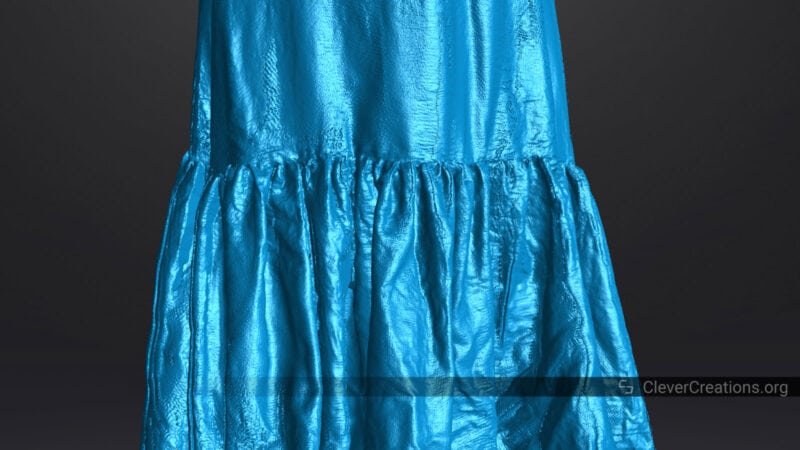
Overall, we’re very impressed by the amount of detail that the 3DMakerPro Lynx scanner can capture. The person, clothes stack, and backpack are especially impressive for the price tag of this scanner.
If you’d like us to test specific objects in the future, please let us know in the comments down below. We’ll do our best to accommodate.
Bottom Line: Who is the Lynx 3D Scanner For?
At roughly $400, the 3DMakerPro Lynx 3D scanner is an excellent solution if you’re looking to scan geometry- and texture-rich objects. As you’ve seen in the scans above, it’s capable of capturing detailed geometry and textures in objects of varying sizes.
Despite its markerless scanning technology, scanning most featureless objects is still a challenge. We also couldn’t get it to scan the head of our person, for example. Hair and other fine details are too much for this scanner.
Since the release of the Mole, the JMStudio software has also improved significantly. It’s much more stable now and you can rely on it to get a good scan without crashing.
The accessories of the Lynx are not of fantastic quality, but they do what they are supposed to do. At this price, we’re not going to complain about them.
In short, the Lynx scanner is a great bang for the buck. It’s a fantastic 3D scanner for anyone who is looking to capture large objects with lots of detail on a budget.
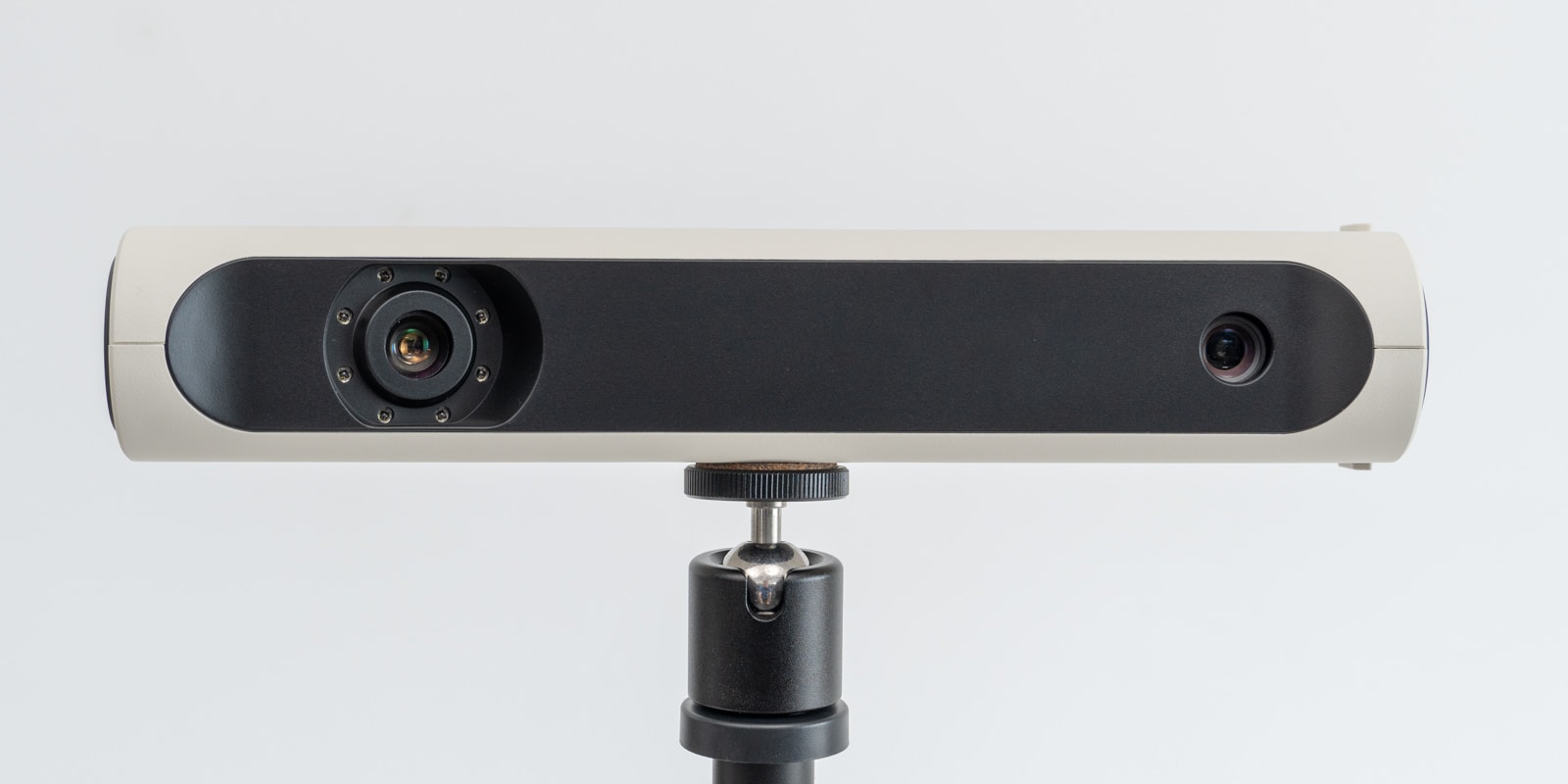



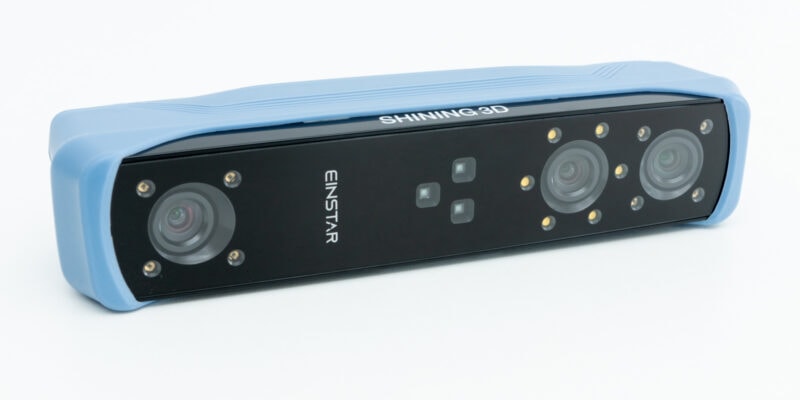

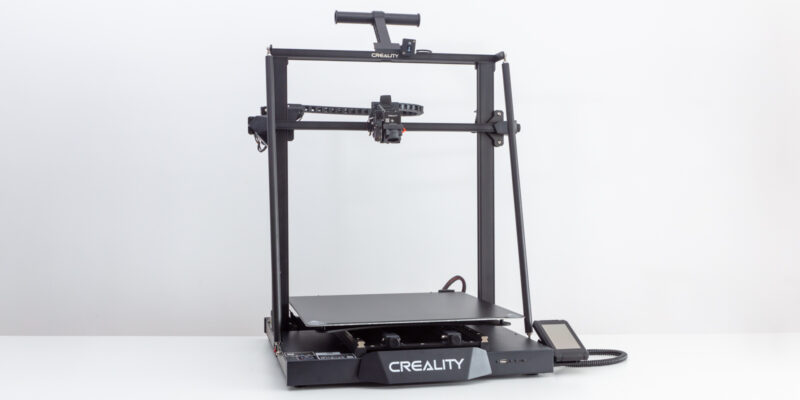
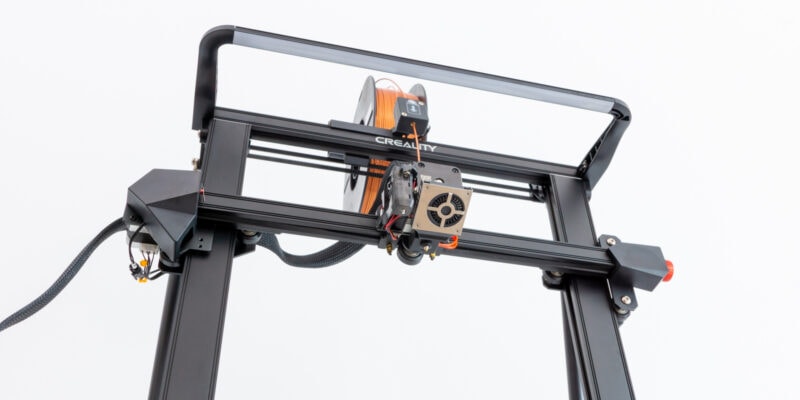

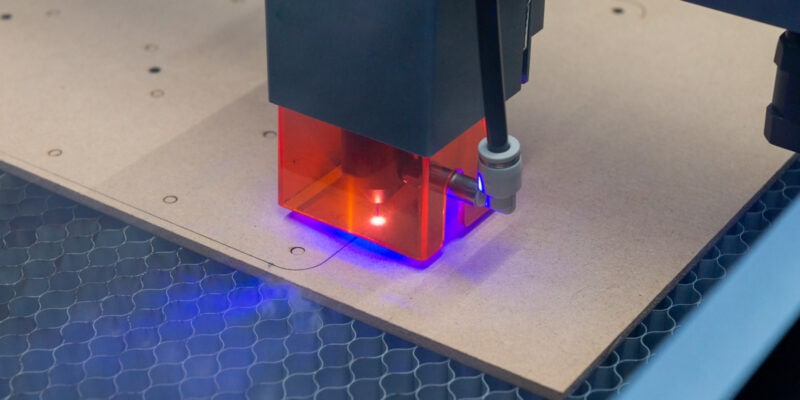

Had to chuckle when I read the claim about the software being stable. Not on Mac! Crashed like 10 times already. Most garbage “powerful” software I’ve ever used. Not to mention the 3d manipulation for manually joining two scans together is the most piss poor maddening piece of trash I’ve ever had the displeasure of using. The only thing I could compare it to was trying to learn Fusion360 except that eventually I was able to accomplish what I wanted in fusion 360 because it actually was a functioning piece of software with a steep learning curve. Whereas this software makes the product it’s associated with lose a great deal of value because you can’t get results with it as it’s buggy trash, at least on m1 mac. Can’t speak for the windows version.
Hi Matt,
Thanks for letting us know! We only tested the 3DMakerPro Lynx with the Windows version of JMStudio. We have made this more clear in the review.
Regarding joining two scans together, do you refer to manually aligning two point clouds or merging two meshes? We found the first to work well in the latest JMStudio, but for mesh work there are plenty of better solutions (Blender, 3DMax, Fusion, ZBrush, SW, Meshlab, etc.).